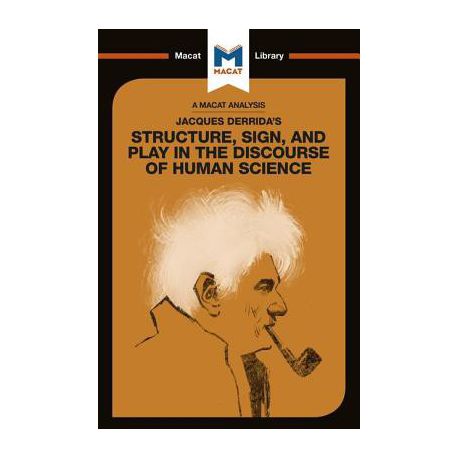
An Explanation of Jacques Derrida’s Structure, Sign and Play in the discourse of Human Sciences
This article will explore the central concepts of a well-known French philosopher, Jacques Derrida. This genius made an effort to define and describe the whole concept of structure. His act highlights the discrepancy in the idea of structure and its centre. The thought-provoking argument of Derrida has imparted questions to every system of this world. However, the main focus of Derrida is to investigate western thought and its effects on its culture.
Introduction of Derrida’s Work
The French philosopher Jacques Derrida explores the concept of structure to elaborate on the system of western metaphysics in his work “Structure, Sign and Play in the Discourse of Human Sciences.” He came to prominence in 1960, in the era of post-structuralism. Derrida aims to dismantle the whole western thought. He opposes Saussure’s Idealism about the unproductivity of language to create meanings. The destructive method of Derrida is to mention the blind spots indigenous in all philosophical writings.
Rupture of the structure of the west
Derrida is traveling from the past to the future in the concept of structure. He is referring to it with the term event. He is critiquing the notion of structuralist, which condenses or accuses the meaning of the word event. The UK essay writers also confirm that Derrida still utilizes a similar notion with great care. In this way, this event will get a rupture or redoubling. In other words, Derrida foreshadows the hemorrhage of the structure of western episteme due to the changing that has happened within it.
The method of Derrida’s essay
In his book After Theory, English literary critic Terry Eagleton claims that post-structuralism has braced, rather than defied, the norms of the power system. However, Derrida has comprehended the whole strategy of a structure in his essay, which does not consist of its centrality. His essay is the endeavor that characterizes the features of western thought, introduces an event that is a complex series of historical moments, and suggests how existing and future models of thought and language might deploy.
The basic idea of Derrida’s Structure
According to Derrida, the concept of structure is referred to as a centre or a point of presence of a fixed origin that has dominated western science and philosophy. The function of this point is to organize the structure and limit the free play of terms and concepts within it. This centre, Derrida says, is the point where substitution or permutation of elements is no longer possible.
Though this structure depends upon the centre, this point is fixed and outflows structurally. It is paradoxically outside the structure due to its elements outside, and the very concept of centred structure is contradictorily coherent. Thus, the centre that gives stability, unity, closure to the western structure is not complete.
The event in the history of the structure
Derrida announces an event that has begun to disrupt the system of western metaphysics. The event metaphorically refers to a complex linkage of the historical process. Derrida alludes to the works of Nietzsche, Freud, and Heidegger as the origins of the process of decentering. Hence, Nietzsche and Heidegger’s critique of metaphysics and Freud’s critical ideas for self-consciousness became the causes of change for the centre’s conception.
Their discourses question some of the dominant thoughts that have subjugated western thought since Plato. The rupture of the event, as Derrida foreshadows, would happen due to the ongoing process of emergence of these radical ideas. Nevertheless, a reader of this essay will be influenced by the moral story but it will not affect the world and its perspective.
Effects on culture
The examples of radical discourses given by Derrida suggest that decentralization in the structure commenced in the 19th century. There was, according to Derrida, an insightful, structural shift in the orientation of western thinking. The experts claim that the decentering occurred in European culture and subsequently in European metaphysics and science during that time.
End Words
To conclude, Derrida brought to light the concept of structure and the nonexistence of its centre to display his ideas for western thought. He has validated that the free play of deep-seated ideas of different western thinkers has decentered the whole system of the western thought process. However, Derrida is foreseeing the monstrous result of the ongoing discussions of thinkers.
Significance of this article
This article will make you understand the whole structure system of any systematic body. If you agree with Derrida, you will be able to develop your radical ideas against your surroundings. It will make you understand the world from a unique perspective. And specifically, you will start demeaning the ongoing cultural trends around you. Derrida was critiquing the process of western episteme, but he didn’t limit anybody, to use his ideas against any culture or system, or structure.



